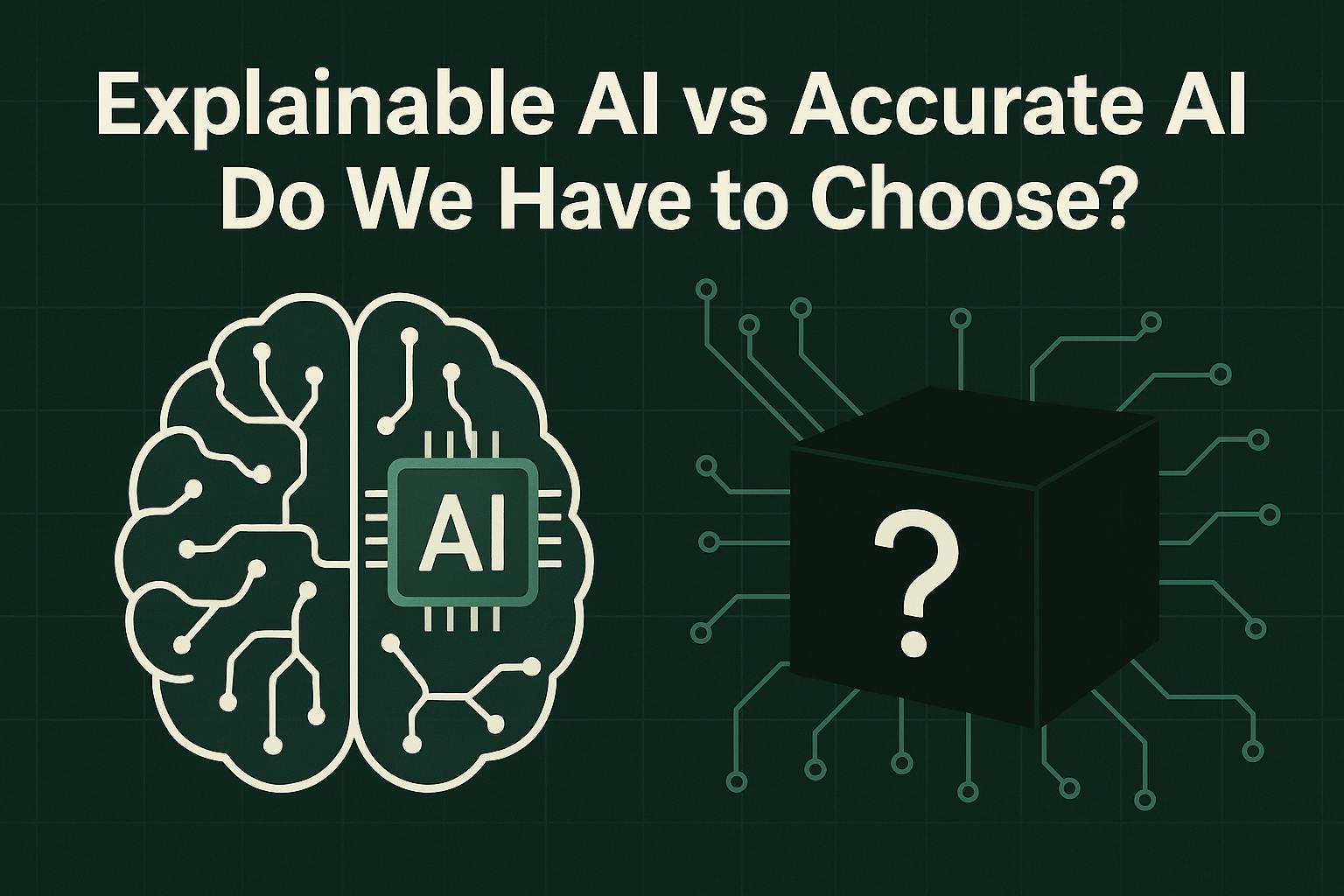You’re driving to work. Your car’s AI tells you to take a longer route. It won’t say why. You ask again—it still says nothing.
Do you trust it?
Welcome to the future of AI—where powerful models make decisions without telling us why. In critical systems like healthcare, finance, and criminal justice, that silence isn’t just uncomfortable. It’s dangerous.
In a world increasingly run by intelligent systems, explainability is the missing link between performance and trust. As models grow more complex, many organizations are faced with a stark trade-off: do we want an AI that’s accurate, or one we can understand?
But what if we don’t have to choose?
📜 A Brief History of XAI
Explainable AI (XAI) isn’t new—but it wasn’t always urgent.
Back in the early days of machine learning, we relied on linear regression, decision trees, and logistic models—algorithms where you could trace outputs back to inputs. The “why” behind the result was embedded in the math.
Then came deep learning.
Suddenly, we were dealing with models with millions—even billions—of parameters, making decisions in ways even their creators couldn’t fully explain. These black-box models broke performance records—but at the cost of transparency.
That’s when explainability became not just a technical curiosity—but a necessity.
⚖️ Accuracy vs Explainability: The Core Conflict
Let’s break it down:
- Black-box models
- Interpretable models
Pros
- Extremely accurate and scalable for complex problems
- Transparent and easy to explain
Cons
- Opaque decision-making, difficult to audit or explain
- Often underperform on high-dimensional or unstructured data
Examples
- Deep neural networks, transformers, ensemble methods (XGBoost)
- Decision trees, logistic regression, linear models
The higher the stakes, the more explainability matters. In finance, healthcare, or even HR, “We don’t know why” is not a valid answer.
🏥 Real-World Failures of Black-Box AI
In 2019, researchers uncovered that a popular U.S. healthcare algorithm consistently undervalued Black patients. It used past healthcare spending to predict future needs—ignoring systemic disparities in access to care. The algorithm was accurate by technical metrics—but biased in practice.
Explainability could have revealed the flawed proxy. Instead, it went unnoticed until post-deployment impact studies flagged the issue.
🧰 Tools That Make the Black Box Transparent
Thankfully, the AI community is responding with tools and frameworks to demystify decisions.
🔍 SHAP (SHapley Additive exPlanations)
- Assigns each feature a “contribution value” for individual predictions
- Great for visualizing feature importance in complex models
🌿 LIME (Local Interpretable Model-agnostic Explanations)
- Perturbs input data and builds a simpler model around a single prediction
- Helps explain why a model behaved the way it did, locally
🔄 Counterfactual Explanations
- Answers: What would have changed the prediction?
- E.g., “If income was $3,000 higher, the loan would’ve been approved.”
🧪 Surrogate Models
- Simpler models trained to mimic complex ones for interpretability
- Good for regulatory or stakeholder presentations
These tools aren’t perfect—but they’re a big leap forward in bridging trust gaps.
❗ The Challenges of Real-World XAI
Let’s not pretend this is easy. XAI in practice comes with trade-offs:
- Fidelity vs simplicity: Sometimes, explanations simplify too much
- Bias in explanations: Explanations can mirror model bias, not correct it
- User understanding: A data scientist might get SHAP plots—but will a non-technical user?
- Gaming the system: Systems could be “trained to explain” rather than improve
Still, progress in this space is accelerating fast.
📜 The Battle of Ethics: Legal Push
AI regulations are shifting from reactive to proactive governance:
- EU AI Act: Mandates transparency and oversight for “high-risk” systems
- GDPR Article 22: Gives individuals the right to meaningful information about automated decisions
- NIST AI RMF (USA): Recommends interpretability as a component of AI trustworthiness
The message is clear: Explainability isn’t optional—it’s coming under legal scrutiny.
Do We Really Have to Choose?
No—but it requires effort!
We’re seeing the rise of hybrid models: high-performance deep learning systems layered with explainability modules. We’re also seeing better training pipelines that account for transparency, fairness, and interpretability from day one, not as an afterthought. Some organizations are even adopting a “glass-box-first” approach, choosing slightly less performant models that are fully auditable. In finance and healthcare, this approach is gaining traction fast.
My Take
As someone working in the IT Service Management industry, I’ve learned that accuracy without clarity is a liability. Stakeholders want performance—but they also want assurance. Developers need to debug decisions. Users need trust. And regulators? They need documentation.
Building explainable systems isn’t just about avoiding risk—it’s about creating better AI that serves people, not just profit.
The next era of AI will belong to systems that are both intelligent and interpretable. So, the next time you're evaluating an AI model, ask yourself:
- Can I explain this decision?
- Would I be comfortable defending it in a courtroom—or a boardroom?
- Does this model help users trust the system—or just accept it?
Because an AI we can’t explain is an AI we shouldn’t blindly follow!
Would you like to take a stab at answering some of these questions? The link for the template is HERE. Interested in reading the content from all of our writing prompts? Click HERE.


